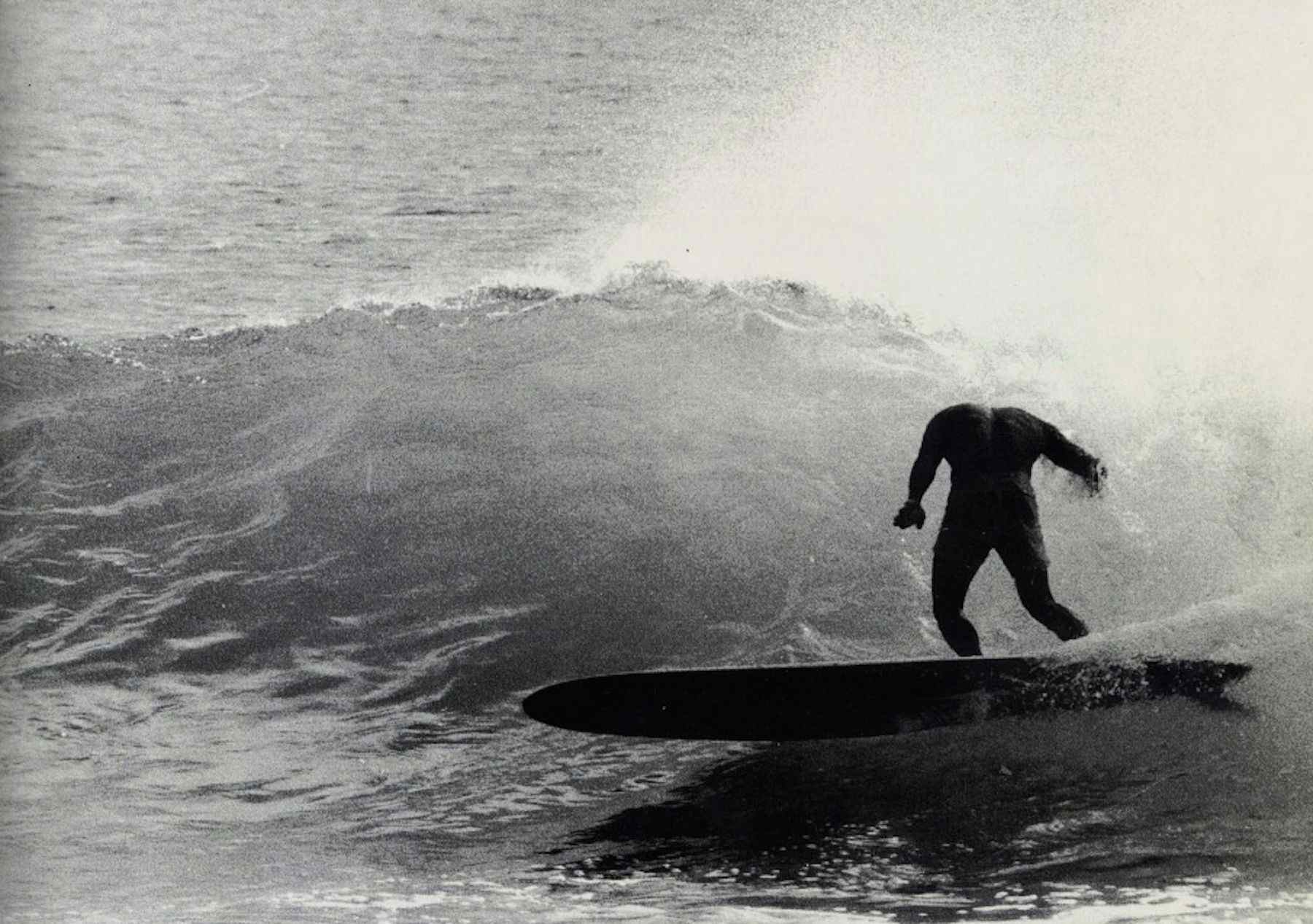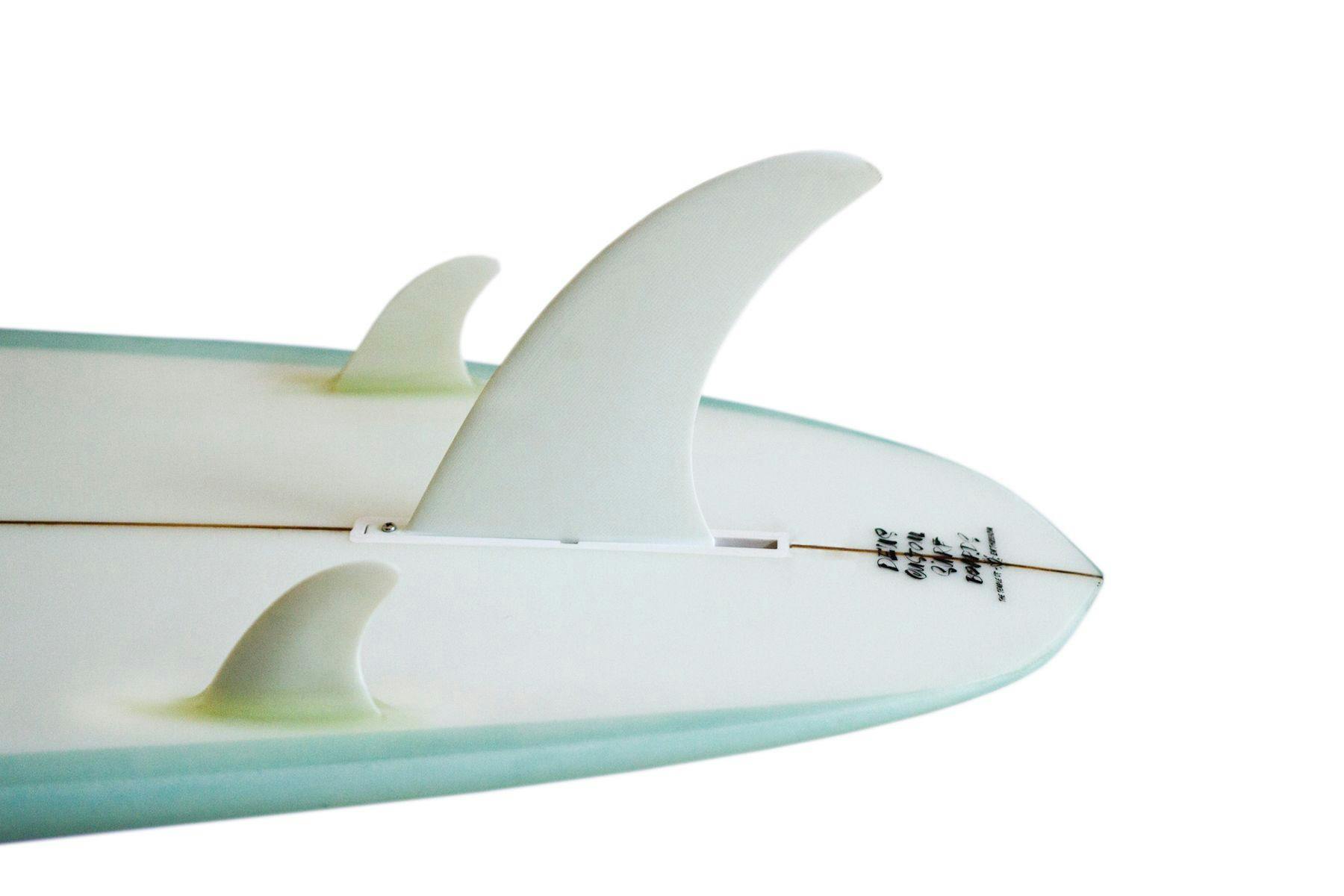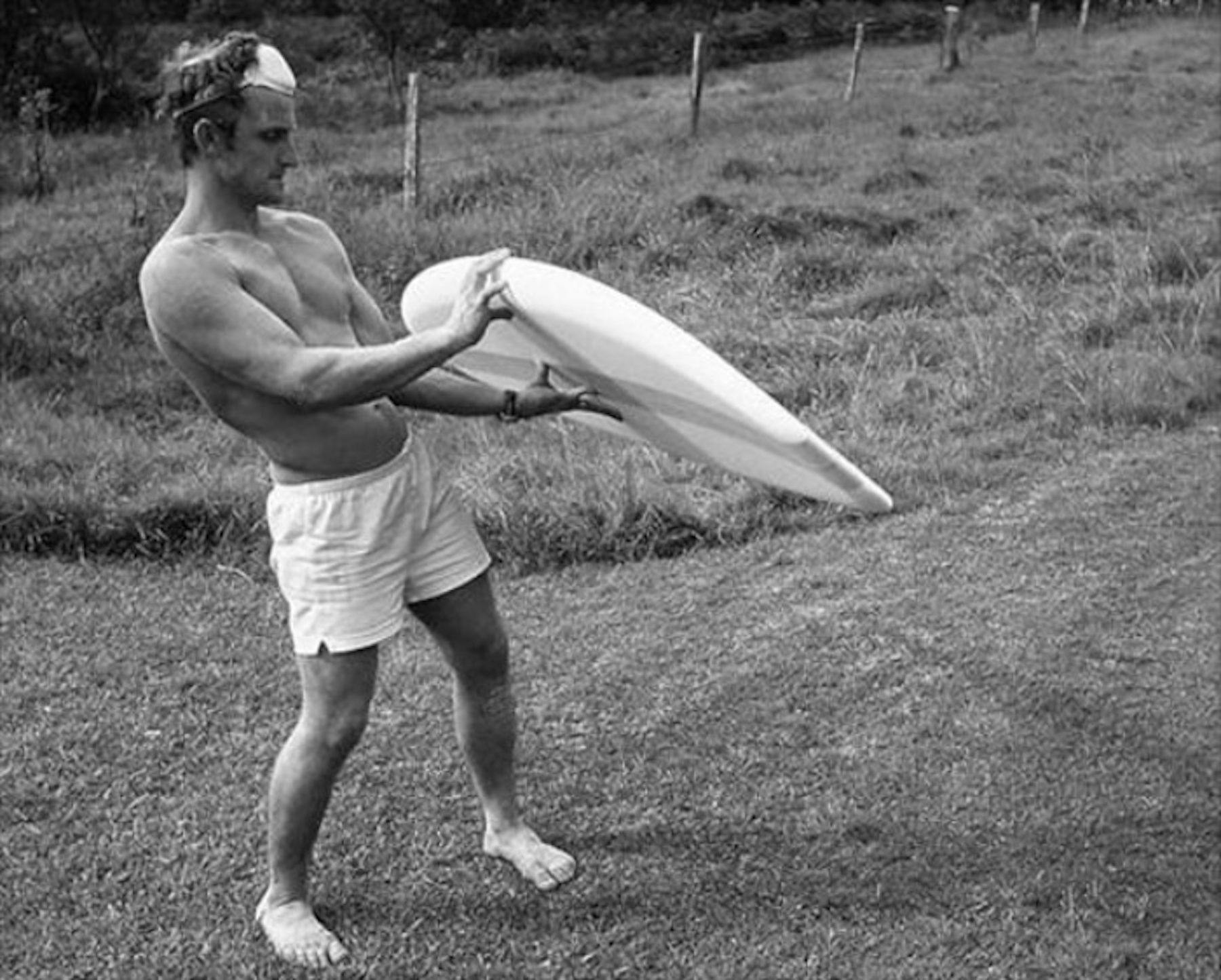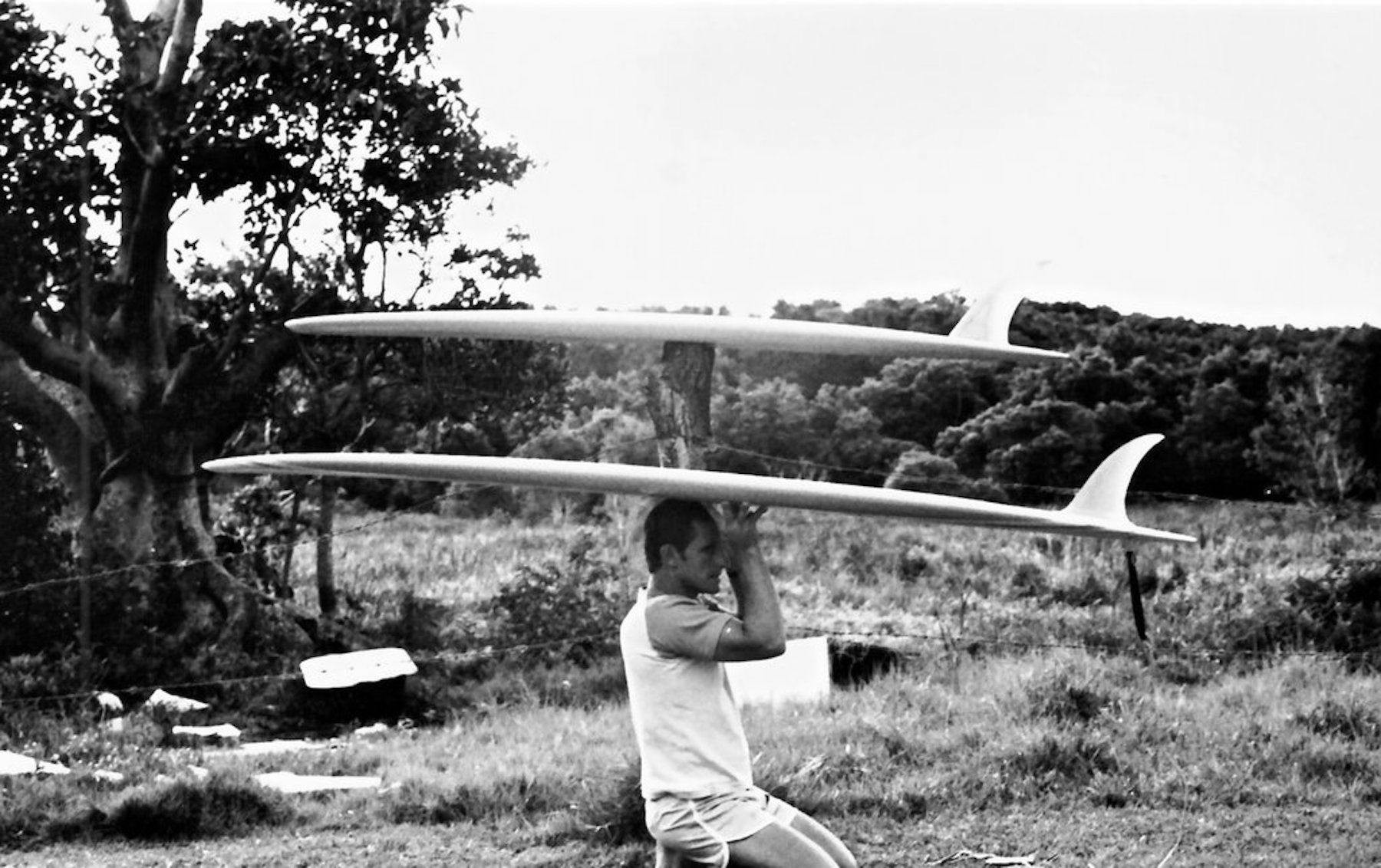InterviewsSurf Simply Interviews – Bob Mctavish

“Remember we are not slaves to the template, the template is slave to us!”
Prolific surfboard shaper and world renowned surfer Bob Mctavish is as excitable as any surfer who ever lived. At seventy-two years old, he is a self-professed stoked grommet. In between extended surf sessions he works full-time shaping old and new surfboard designs alongside his son Ben, at the Mctavish factory in Byron Bay. One might do well to retain similar levels of energy in their fifties, let alone seventies.
Along with Californian born filmmaker and kneeboarder-designer George Greenough, and Australian surf giant Nat Young, Bob is credited for ushering in the shortboard revolution of the late 1960’s. Australia’s Surfing Life magazine selected him as the “Most Influential Shaper of All Time” in 1992 and four years later he was inducted into the Australian Surfing Hall of Fame. If you’re unfamiliar with Bob, check the entry about him in the Encyclopedia Of Surfing for more on his history.
Earlier this year I spent a few hours with him while he hand-shaped me a new surfboard. I set my iPhone to record and the following paragraphs are his ramblings converted to text. Much was too incriminating to be included here, but it should hint at the personality that lurks behind the legend.

Years ago I was surfing massive Lennox Head and I was the only guy out, everyone else had been washed in. I’m out by myself and around the corner comes this wild looking bloke… he was knee paddling on a big log and I go… “Whaaat?” The bloke takes off on an absolute bomb out at Red Rock, right out the back and he comes blasting through on this massive, flat and ugly 60’s log, just going “yeahhhh.” He gets to me and kicks out and he says “Surf’s great aye.” I said “Yeah and only two of us out yippie… so where the bloody hell did you come from?” You wouldn’t believe it… he said he’d jumped in at Flat Rock and surfed his way down, and that he was going to surf his way all the way back to Broken Head. That’s seven miles of surfing up the coast. I realised my brain was thinking too limited… this guy was thinking so big! He had the current and he had a big south swell and he was out there using it all to his advantage. To this day I have no idea who it was.

I used electric planers pretty much right from the start. When I was working at Hayden in the 60’s and desperate for a surf I’d lay the cord across the board and run the planer over it and yell, “Ah noooo… Hayden! I’ve run over the cord!” He’d groan about getting an electrician in to fix it and off we would go to surf Noosa. I did that three times. I’d get back and the planer wouldn’t be fixed and Bob Cooper the glasser would yell, “Mctavish there’s no boards to glass tomorrow. You’ve been surfing all day!” So I‘d jump in with a surform and just hack a couple of blanks down. I’d shape two boards without a planer so that the next day he’d have something to glass. It was hard work but it was worth it. Sometimes you’ve just got to put muscle into boards.
There’s a little bit of bravado in shaping. You’ve got to shape with confidence and believe in what you’re doing. You have to shape and ride your own boards. I was sort of blessed right from the beginning because I had a lot of confidence. Even before I was a shaper I’d made a couple of boards at home, using Balsa and other materials. I was working at a radio station in Brisbane at the age 14 through to 16 or 17 as a panel operator and I was daydreaming about surfboards and drawing them all the time. Anyway, I eventually got the sack and started in the surfboard industry. I had ideas right from the get go and I knew what I wanted. I felt really privileged that I was in that position.
Most people have no idea what they’re doing when they start shaping, but give it five years of perseverance and they end up with a good product. Before you know it they are qualified.

When I first started shaping in California in 1967, the router was the standard template tool. That was because the Yanks were already into mass production. They had separate, full length templates made for each board size… four templates for one design. They’d just run the router around them. In 1967 they even had a pneumatic press at Morey Popes, it came down and held the template in place, they’d get the router out and “rrrrrraarrr” it was cut out in 30 seconds… how cool is that! Back in those days, Grubby Clark could plane any rocker you wanted into the bottom of the blank. The blank would arrive and it would have a perfect rocker and have a perfect flat bottom. You’d lay your template down, hold it in place with the press, get the router out and bam! Your template and your bottom shape were done and all you’d have to do was skim the deck, roll the rails and use sandpaper… it was that easy.

In 66 or 67 they were making around 500 or 600 boards a week in the Dewie Webber factory. It was terrifying. These days at Al Merrick’s in California they do about 8000 in a year. In peak season they’re maybe doing around 1000 a month, or two-hundred and fifty a week… nowhere near as many as the Webber factory. But back then there was only about six brands in the whole industry… and then the shortboard revolution came along and stuffed everybody! 1968 sorted the Yanks and their production lines out.
With a single fin you can dominate up to about 15 inches of width in the tail, but add side bites that are bunched close to the fin and it’s a whole different world. They won’t push you around, they don’t tell you what to do, all they do is cooperate with you when the wave gets edgy… they don’t affect your turn at all, but they’ll hold when the single fin wants to let go. I made a big batch of them back in the 70’s.

I’ve been a dedicated flat bottom, double concave guy for the last twenty years… it’s so reliable and you know exactly where you’re going.
You can use nose concaves in almost every kind of surfboard. Not for noseriding like on longboards but to help you catch waves. It also allows you to reduce thickness. I take out a few ounces of foam and stringer with it. People keep coming back over and over again telling me how easy it is for them to catch waves. Even if it’s a little board, a 5’8, you can put your head down in the front when you are paddling and the board still planes. As the boards get bigger there is even less chance of them nose diving. When the nose dips under it’s easy to plane out. When it’s heavy and you’re pulling into waves and the nose plains up instead of diving under, and there’s no water flow coming across the deck and hitting you… that’s when you appreciate nose concave.

I reckon guns (big wave boards) are all wrong. Guns should have bluntish noses. There is nothing worse than paddling a ten foot gun into a big wave and having a little wave comes over the pointed nose and run down the deck to smash you in the chest. It’s just drag. Whereas if you broaden the nose out and put a concave in it, the thing lifts and chatters as you’re paddling. I just made a 10 footer for Dave Rastavich and it has a wide concave nose… haven’t had a report from him yet but he’s taking it over to Portugal.
With asymmetrical boards we use the twin fin forehand and quad fin backhand theory. That’s what Ryan Burch was doing when I spent some time with him. I’ve made a bunch in the 70’s and recently a couple for myself around the 7’6 mark. I’ve found that the forehand twin-fin makes the board come out of the hole like a rocket ship.

John peck is mad as a cut snake. One time he was in jail in Kauai in 1961 for dope, the CIA or FBI had busted him. I was there hanging for that month and one night he walked into the restaurant I was in, it was run by Tom Morey, the inventor of the boogie board, and I said “What are you doin’ in here? Aren’t you supposed to be in jail?” and he says, “Owww, I just shrunk myself and walked through the bars.” When he was here in Byron last year I asked him again how he got out and he said, “Oh yeah I just shrunk myself and went through the bars. In fact they didn’t know I was going in and out of the jail for a week… I took the bars right out but they could still see them. I couldn’t see any bars and I’d just walk right through.” I almost believed him… he has a very powerful personality.
From about 67 through to the 70’s it was the wild time for surfing because of the drugs. Firstly, it was experimental because no one knew how far they could go and secondly, it was all the money. A lot of rich people were hanging in Hawaii around surfers. Surfing was the groovy thing to do. All the happening people were around… Willie Nelson, Jimi Hendrix, Jack Kerouac – all those guys were hanging in Hawaii with the vanguard of the surfing revolution. You’d see powerful powerful people and also all the weirdo freaks under the sun. A lot of strange things went down. Some people would take like ten hits of acid and go to a Janis Joplin show. Even Janis was living in a small shack in Hawaii.

Now everyone is surfing. Its commonplace. Back then we were still wild people. It was a bit of a gang, you know, a global brotherhood and we definitely had our fair share of crazy people. It was always experimental and it was definitely bent. Along with the hippies of San Francisco surfers were the pioneers of alternate culture. Surfing was seen then as a raw example of it, and if you hung out with surfers you were cool. Now it’s different because the whole world surfs, but surfing is still cool.